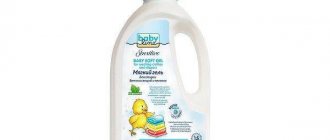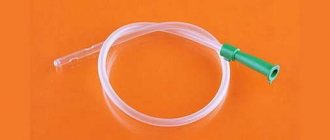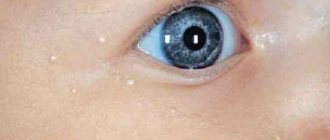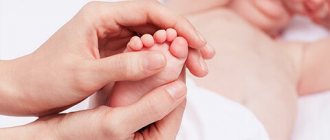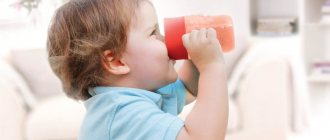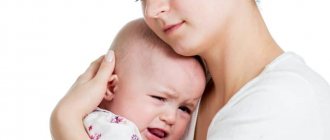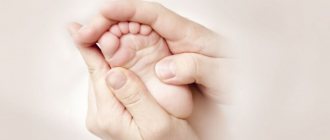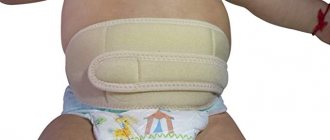In the first aid kit of young parents there will always be devices that can make their life much easier. Such accessories include an aspirator for newborns. This attribute will not be superfluous.
Any child experiences some breathing difficulties in the first months of life. Mucus accumulates in the nasal passages. As a result, the baby experiences discomfort.
Remember your newborn baby and the first nights in the maternity hospital - something is constantly grunting, seething, sniffling in his nose.
The purpose of the aspirator is to remove mucus and clear the nasal passages. In addition, such a care item is simply necessary when a small child has a runny nose, because:
- He doesn't know how to blow his nose yet;
- Choosing safe drops for a baby is not so easy: for more details, see the article Drops for the common cold for a newborn>>>.
Let's figure out which aspirator is best for newborns and how to use the accessory.
Runny nose in babies - danger and treatment
The nasal passages perform the most important function of protecting the body from viruses, and are the first to meet “dangerous guests.” It is all the more important to maintain the condition of the mucous membrane in a working, active state.
If the air in the apartment is too dry, crusts may appear in the nose. It is a mistake to think that a baby is not able to clean his nose on his own.
Sneezing is a reflex skill that is present in a child from the first days of life. You should only get into your child's nose as a last resort. Dry crusts come off easily when you sneeze.
The air in the apartment should be adjusted. The optimal humidity should be 50-70%, and the temperature in the apartment 21-23 degrees.
Of course, Komarovsky talks about lower temperatures, but I don’t think you will implement this - it’s too cold. And putting on socks and wrapping yourself in a blanket in an apartment in the summer is a dubious pleasure.
Rhinitis, or inflammation of the nasal passages accompanied by a runny nose, is a common occurrence in children. Especially in the autumn-winter period.
Fluid accumulated in the nasal passages makes breathing difficult. As a result, the child feels severe discomfort. He cannot eat or sleep normally.
A runny nose is very dangerous for a baby, because newborns, as a rule, do not know how to breathe through their mouths. A runny nose can cause disturbances in the breathing mechanism and other completely unpredictable abnormalities.
Mucus can enter the auditory tube and then into the middle ear area. As a result, the newborn may develop otitis media.
To get rid of such a disease, serious therapy with antibiotics is required. If a runny nose occurs, you should take your baby to the doctor. Only a pediatrician can prescribe adequate treatment.
An aspirator can be used to remove secretions and mucus. What it is?
Description of the accessory
What is a nasal aspirator for newborns? This accessory operates like a pump. The simplest aspirator is a rubber bulb with a tip.
When used, a discharged pressure is created inside the accessory. Thanks to this, you can carefully suck out mucus and secretions from the baby’s nose.
When using an aspirator for newborns, all rules must be followed. Only in this case will cleansing the nasal passages be painless and effective.
A device in the form of a syringe
This type of device is considered the most inexpensive and primitive. The cost of the device is about 50 rubles. This accessory consists of a silicone tip and a small bulb made of rubber.
Using this product is very simple:
- It is necessary to squeeze the rubber bulb.
- Carefully insert the silicone tip into the child's nasal passage.
- Slowly and carefully release the pear. As a result, mucus and secretions will be sucked in along with the air.
- After the procedure, the syringe should be washed well and then boiled.
The main disadvantage of this type of aspirator is the absence of a limiter on the tip. The device must be inserted into the nostrils carefully and not all the way, so as not to damage the mucosal tissue.
Another disadvantage of such an aspirator for newborns is the opaque material from which it is made. It is not always clear how much mucus has been sucked out, or whether it has been sucked out at all.
Mechanical aspirator for newborns
At the moment, there are many types of aspirators. However, their mechanism of action is the same.
A mechanical aspirator for newborns, reviews of which are mostly positive, is made in the form of a tube with a special reservoir for mucus.
This product is equipped with a replaceable filter that prevents liquid from getting from a child’s nose into an adult’s mouth.
The risk of injury to a newborn's mucous membrane when using such a device is low, since its tips are made of soft silicone and are easy to change.
The cost of such a child care item is no more than 200 rubles. For certain types of devices, you can purchase disposable tips.
The most popular device is the Otrivin aspirator for newborns.
It's easy to use:
- You need to insert the tip into the baby's nostril.
- An adult must draw in air. As a result, the mucus should be easily sucked out and fall into the reservoir intended for it.
- After use, disposable aspirators are thrown away, and reusable aspirators are sterilized.
Pros and cons of nasal aspirators
Even though baby aspirators for newborns are useful for all young parents to have, they have certain positive and negative aspects that it wouldn’t hurt to know about before purchasing:
- Syringes are the most budget-friendly option for aspirators that can be bought at any pharmacy. It is very easy to prepare them for the procedure of removing mucus from the nasal passages. However, they are unsafe to use due to the risk of damaging the skin and mucous membranes. In addition, patients do not really like such pears.
- The mechanical aspirator is an easy-to-use device. All that needs to be done is to place one end of it in the nasal passage, and the other should be inserted into the adult’s mouth. Caring for this device involves sterilizing the aspirator tubes, although this feature is implemented only in some models.
- Electronic aspirators for newborns. More functional models that can not only clear the nasopharynx of mucus accumulated inside, but also rinse and moisturize the mucous membrane. Of the main disadvantages of these devices, it is worth noting the high cost and risk of breakdown. But in general, they leave a pleasant impression on young patients due to the cheerful music that plays while using the device.
- Vacuum aspirators . They can only be used in conjunction with a household vacuum cleaner. Unlike other models, they have a built-in independent power regulator, which completely eliminates the risk of injury. Although children are not very enthusiastic about the noise of a vacuum cleaner, the impact of this disadvantage can be minimized if the hygiene procedure is presented in the form of a game. In order for the device to perform its functions for as long as possible, you just need to regularly care for the attachments.
Electronic aspirator
Electronic aspirators are the most expensive and most effective.
The product is equipped with a soft tip made of silicone and has a limiter. Thanks to this baby care item, you can carefully remove crusts and mucus. This process occurs automatically.
The device is easy to use:
- It is necessary to insert the tip of the aspirator into the nasal passage of the newborn.
- Press the button and the device will automatically suck out the mucus.
The electric aspirator is just perfect for newborn babies. The accessory has a transparent container in which mucus is collected. This allows you to see how much fluid has been removed from the baby's nose.
The device allows, if necessary, to rinse the newborn’s nose with boiled water or sea water. The power of the electronic aspirator is low. Therefore, the risk of injury to the mucous membrane is minimal.
This device runs on batteries and is small in size. This allows you to take it with you on a walk. Some models of electronic aspirators are capable of playing melodies.
This allows you to distract the baby from the procedure. The disadvantage of the device is its high cost. Such a product can be purchased at a price of 1,500 rubles and above. In addition, the electronic aspirator for newborns is short-lived.
Choosing a nasal aspirator
Choosing a nasal aspirator
Nasal aspirator.
Children's "Nasal Aspirators" were invented to facilitate the care of children, mainly under the age of three years. They are available in various modifications and operate both on batteries and without them. In any case, this item is an indispensable assistant for mothers of “snotty” babies - since a child at this age is not yet able to clear his nose of the mucus that naturally accumulates every day.
Officially, these devices are called “nasal aspirators,” but in common parlance everyone simply calls them “nozzle ejectors.” This device is worth having on hand. A nasal aspirator (nozzle suction) is especially necessary if the baby catches a cold and is overtaken by ARVI (acute respiratory viral infection) with the usual symptoms in this case: sinusitis, runny nose, copious discharge of mucus from the nose.
With the help of a nozzle ejector for children you will cope with the problem. It will help rinse the baby's nose and remove excess mucus (snot). In addition, a nasal aspirator can sometimes help out at a critical moment before the doctor arrives, if a foreign object gets into the baby’s nose and interferes with breathing. Parents must have a baby aspirator in their home medicine cabinet.
What types of nozzle ejectors are there, what is a nasal aspirator - how to choose and how to use?
1. The simplest nasal aspirator is a “manual” or mechanical nozzle pump
-a syringe (an elastic “bulb” with a tube), which requires nothing but the caring hands of the mother to work. No batteries - this is a definite plus. Another plus is low cost and reliability, since there is practically nothing to break here.
Advice on how to choose a mechanical aspirator: give preference to products of a convenient shape and size, made of high-quality materials (without foreign odors); it is better to buy a nozzle ejector with a soft silicone tip - a special shape that prevents penetration too deep into the nose.
2. Another version of a mechanical aspirator, which is called a nozzle ejector “tube”
, – involves the removal/aspiration of the liquid contents of a child’s nose using the mother’s mouth, by simple suction through a tube with a flexible hose ending in a mouthpiece. The process becomes safe due to the presence of an intermediate reservoir, from which air is removed by force of the mouth. At the same time, the mother feels the traction force quite accurately and can easily control it.
It is important to have a soft silicone tip so as not to accidentally injure the child’s mucous membrane.
3. Electronic nozzle ejector.
It is very convenient to use an aspirator (nozzle suction) with an electric drive: the micropump is turned on at the press of a button. After turning on, simply bring the tip of the nozzle suction device closer to your nostril.
Advice on how to choose a battery-powered nozzle ejector: it is recommended to buy a battery-powered aspirator with the ability to recharge and have an additional function - moisturizing and rinsing the nasal cavity.
4. Vacuum nozzle ejector
th is a nasal aspirator powered by a vacuum cleaner. To use it, you need to connect it to the connector of a vacuum cleaner with adjustable air flow power. For details, see the description and instructions for the specific device.
What to pay attention to:
-soft tip so as not to injure the child’s mucous membranes;
- the presence of a compartment for collecting nasal contents;
- presence of a filter;
-convenience of washing the aspirator, dismountable design;
-convenience for mother and baby;
-quality of plastic.
Make the right choice and be healthy!
- Publication date: 09/04/2019
- To help mom
How to use the device
Experts recommend moistening your baby's nose before cleaning. To do this, you can use regular saline solution, a decoction of sage or chamomile.
This procedure will make the mucus more liquid and soften the crusts. When irrigating the nasal passages, the newborn should be held upright. This will prevent fluid from entering the baby's airways.
So, how to use a baby aspirator? The process of sucking mucus from the baby’s nasal passages should be performed according to the following scheme:
- The child should be picked up. The baby should be calm during the procedure.
- The baby's head should be turned to the side. Place 3 to 5 drops of saline solution or chamomile decoction into each nostril. It is prohibited to use sprays for newborns and children under one year of age.
- You should close one nostril with your finger, and insert the aspirator tip into the second and suck out the liquid.
- The same must be done with the baby’s second nasal passage.
You can also seek help from experienced healthcare workers.
How to use a newborn aspirator?
Before you start using the baby aspirator for newborns for its intended purpose for the first time, you must first read the instructions supplied with the device .
It contains important information on the rules for preparing the device for operation, on the processing and sterilization of removable parts and their storage.
Sometimes in the instructions you can also find explanatory illustrations, from which you can understand how to use the aspirator to remove mucus and secretions from the child’s nasal passages.
- At the very beginning, you need to pick up the child , holding him upright, carefully turn his head to one side and introduce a couple of drops of sea water into the overlying nasal passage.
- Next, the tip of the device is inserted into this nasal passage and the mucus is sucked out . Do the same with the other half of the nose.
- Having completed the procedure for removing mucus from the nasal passages of a sick child, the device should be disassembled, following the recommendations of the instructions, and rinsed. Sterilization of the tip is carried out immediately before subsequent use by the operator.
Precautions when using the aspirator
Using a device to remove mucus from a child’s nasal passages in accordance with the instructions is a guarantee that during the procedure the risk of damage to the nasal mucosa or injury will be eliminated.
During the procedure for removing mucus from a child’s nasopharynx using an aspirator, parents should monitor the location of the tip. If, through carelessness, the nasal mucosa is injured and even bleeding occurs, then in this case the child’s head is tilted forward, while the wing of the nose on the affected side must be pressed against the septum.
At the preliminary stage, when you inject a solution of table salt or sea water into the nasal passages, monitor the amount of liquid injected . If a certain amount of it gets into the larynx and pharynx, it can cause a coughing or vomiting attack in the child. The possibility of infection spreading through the respiratory tree cannot be ruled out.
If you notice signs of developing rhinitis in the first months of a child’s life, this does not mean that you can start using an aspirator without first consulting a doctor. There is always a possibility that after using the device the child’s condition will change. A runny nose can indicate not only rhinitis, but also other diseases, some of which are quite serious.

